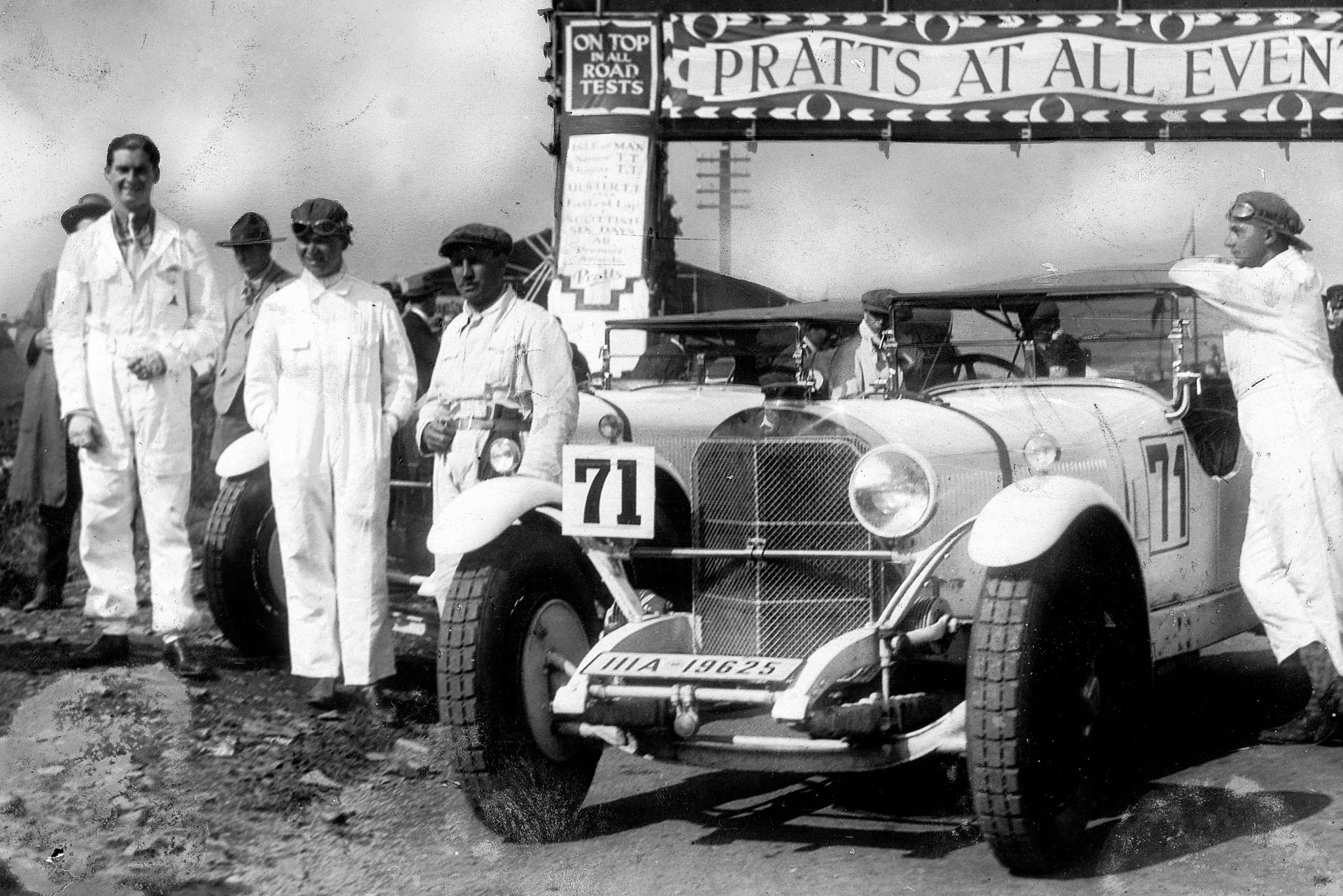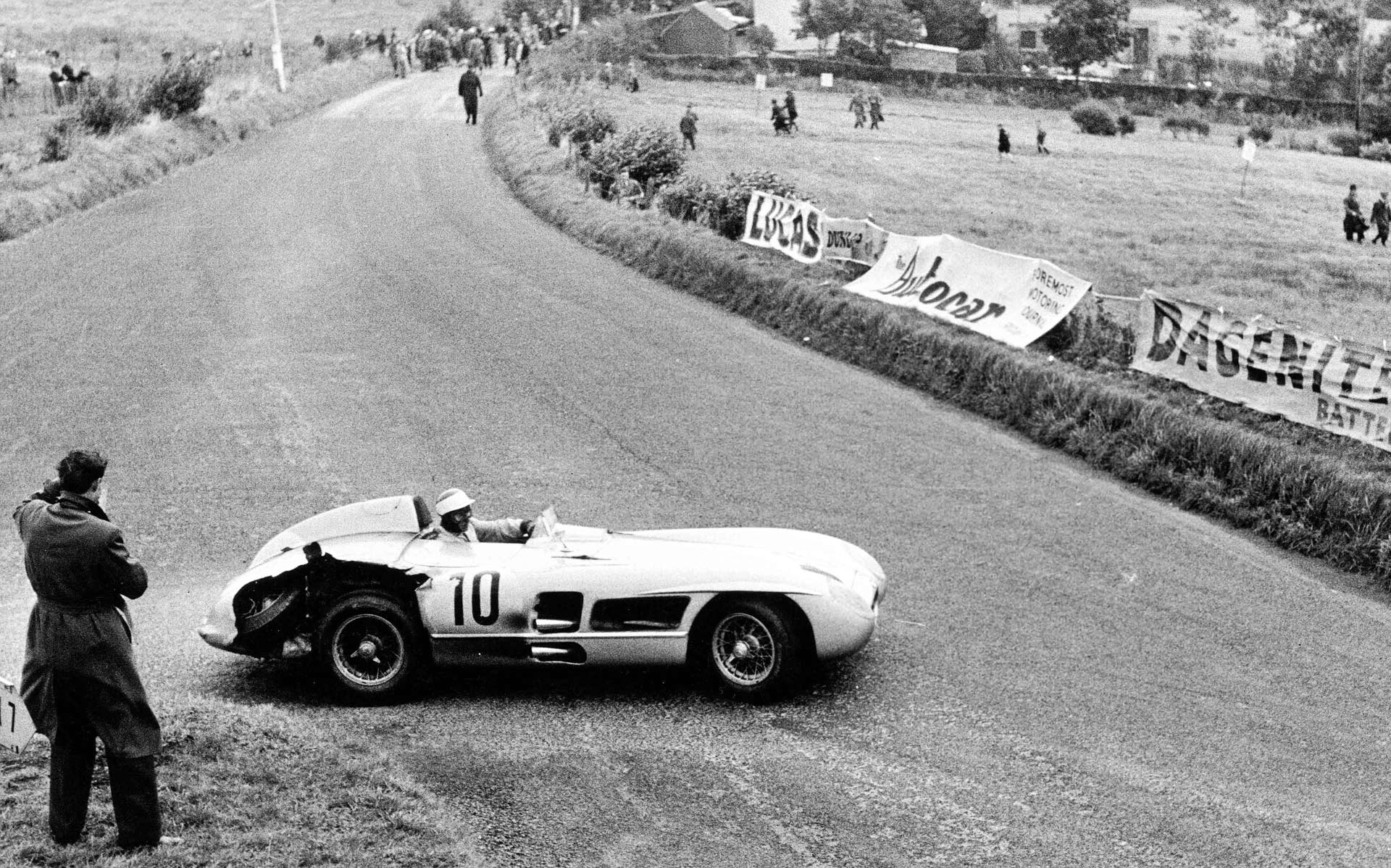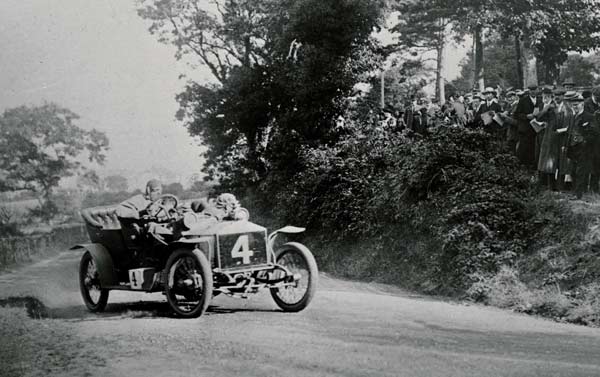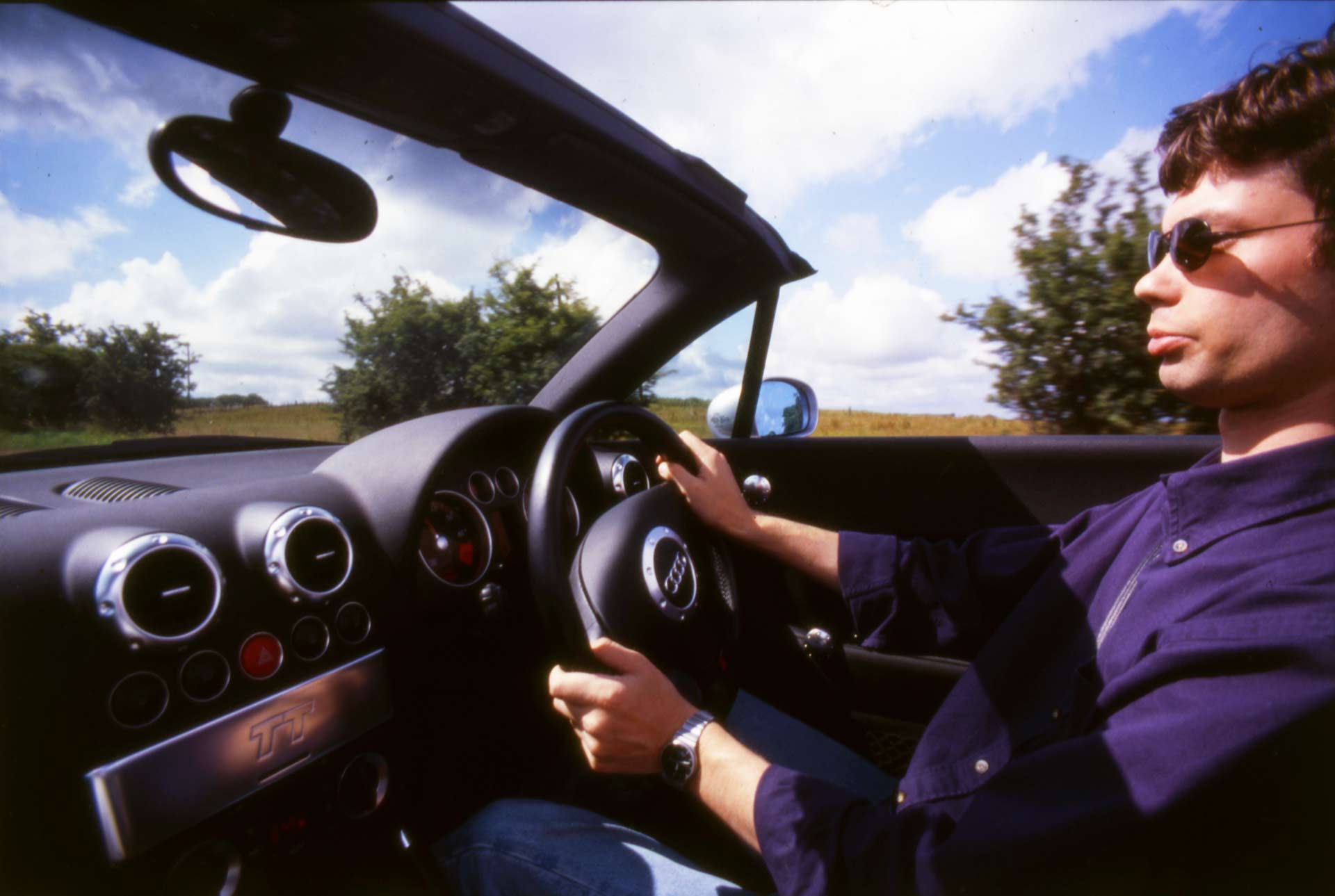The racing is over, the cars and the crowds have gone. There's nothing but a ribbon of tarmac, deserted buildings and advertising. Yet a racing circuit still stirs the emotions, even when there's no racing. Stand on the startline at any great venue – as James Garner does at Monza in the film Grand Prix – and you can almost hear the roar of the engines, and see the great names of the past battling wheel-to-wheel down to the first corner.
But as the traffic speeds out of Belfast on the main A20 and on into Dundonald, only those who stop to take in the imposing frontage of Stormont Castle will have any feeling of the closeness of history. Which is a pity, for less than half a mile further on is the piece of history we've come to Ireland in an Audi TT roadster to see: here the road becomes part of a racing circuit which was described as the greatest of its era.
Though dual carriageways have obliterated the original pits and grandstand of the Ards circuit, where the Tourist Trophy races were held from 1928 to 1936, a stone wall with a plaque marks the spot. We park the Audi for a photo, but the weather has other ideas: the day-long threat of rain has become reality.
It reminds me that in the 1928 race, won by Kaye Don's Lea-Francis, the rules required the drivers to complete two laps with their hoods raised and then lower them before continuing – or not, in the case of Malcolm Campbell's Bugatti, which caught fire in the pits. In 1929 the process was reversed: the drivers sprinted across the Belfast road in a Le Mans start, then lowered their hoods before racing away. I'm not going to try that, not with four lanes of traffic to contend with and a roof which is electrically operated, but then needs a fiddly plastic cover to be extricated from the boot and fitted over it once it has been lowered. Anyway, the angry sky suggests there will be little chance for us to drop the Audi's roof today.

Mercedes team lines up before the 1929 TT. Eventual winner Rudolf Caracciola has his hands in his pockets Daimler
We turn left at Quarry Corner, a natural amphitheatre which attracted huge crowds and caused no shortage of incidents – most famously in 1932, when Freddie Dixon's Riley left the road, leapt the hedge, and landed in a cabbage patch. Sweeping bends then take us up to Glen Hill, where that year 'Goldie' Gardner crashed his MG and broke his leg, ending his racing career – though he went on to enjoy success in record breaking. Bradshaw's Brae led the cars back down the hill, and with a steep gradient and seven tricky bends in half a mile, many a crew never reached the bottom in one piece. In 1929 a fascinating battle between Glen Kidston's 6½-litre Bentley and Rudolf Caracciola's Mercedes was resolved in the original Regenmeister's favour when rain caused Kidston to skid on the Brae, narrowly missing a telegraph pole and ending up in a ditch. In 1935 three Singers crashed on the Brae with identical steering failures, and a fourth had to be withdrawn.
A half-mile straight led the cars into Conway Square in Newtownards. The square is now pedestrianised, so you can safely stand in what was then the road between a row of shops and the Town Hall, and wonder how Caracciola, Kidston and the rest could wrestle huge and unruly motorcars at racing speeds through such a tiny gap – though many bounced off the sand bags next to the Town Hall during the rain of '29. Drivers often failed to brake hard enough for the corner and took to the escape road behind the Town Hall, and this is the route we must follow in the Audi, rejoining the old circuit in South Street. The imposing Town Hall remains visible in the mirrors for half a mile or more as the road tracks straight out of Newtownards along the fastest part of the circuit, but today roadworks are creating a traffic jam which prevents us from exploiting the Audi's 225bhp.
There's more dual carriageway here, and Scrabo Tower – a folly built by the Marquis of Queensberry – is visible on the hill to our right, with Strangford Lough to the left. As we sweep right towards Comber, old pictures suggest we should see a white house on the right but there's no sign of it. I consult the map, but eventually we conclude that the house must have been bulldozed when the road was widened.
The railway has gone, and there's no sign of the Glassmoss level crossing which unsettled the cars on the way to Comber and the infamous 'Butcher's Shop Corner'. In 1931 Sir Henry Birkin's Alfa joined the long list of cars to end up in the sand bags here, after he was outwitted by Giuseppe Campari. Traffic lights have been added, and paving has replaced the cobbles, but otherwise little has changed. There's still a chemist on one side and McWhinney's the butcher on the other, where Mrs McWhinney showed me the TT photos on the shop walls. Hugh McWhinney, whose name was above the door in the 1930s, was her father-in-law. 'Reporters used to sit upstairs,' says Mrs McWhinney. 'They could see all the way down Bridge Street and around the corner.'
Bridge Street is narrow and bumpy even today, and leads us to a restaurant called TT which is full of memorabilia and photos. The road to Dundonald joins the end of the Comber bypass, built on the old railway embankment: the circuit passed under the railway, but there's little suggestion of it save for a short row of 'railway cuttings' cottages.

Audi TT rests at the Ards start-finish line on the main road into Belfast, which is marked by a plaque
Ballystockart, where the road passed close by another bridge on the now-defunct railway, caught out a number of drivers. The first Ards TT fatality occurred here in 1929, when Frank Clark crashed his OM and Grindlay's Triumph Super Seven, the first car on the scene, skidded into marshals who were trying to move it. Clark and an official were killed. Birkin's Bentley hit the wall and retired in 1930, the year Nuvolari won in an Alfa. On the way to Dundonald the course passed under another railway bridge, marked now by the remains of an embankment, and skirted the town on its way to a hairpin with an off-licence on the inside. It's still there, though the race-day banners for the Daily Mail, Dunlop, Shell and Pratts Motor Spirit are gone and traffic lights control the junction where we turn right, onto the A20.
The rain doesn't ease as we head back to the start line: it was like this in 1933, when Tazio Nuvolari and Alec Hounslow won one of the greatest TT victories in an MG K3 that Nuvolari hadn't even seen, let alone driven, before the meeting. Asked afterwards what he thought of the MG's brakes, Nuvolari is reputed to have said he had no opinion – because he hadn't used them...
The Audi is swift and sure-footed round Quarry Corner and down the twisty and slippery Bradshaw's Brae. The run to town from here looks easy, but was to see the end of racing at Ards: in 1936 local driver Jack Chambers lost his Riley under the bridge and hit a lamp post. Eight spectators were killed, dozens more injured. Enough was enough; the TT had to find a new home.

John Fitch's Mercedes SLR in the 1955 TT, rear bodywork ripped apart by an earlier tyre failure while Stirling Moss was driving Daimler
The TT moved to Donington for two years, then the war intervened. There wasn't another TT until 1950. After running a lower-profile Ulster Trophy race at Ballyclare, the Ulster Automobile Club found the Dundrod circuit in the country roads to the west of Belfast which avoided towns entirely. Narrower, and rising nearly 500ft from Cochranstown in the west to Wheeler's Corner in the east, Dundrod was a driver's circuit: the deep ditches and stone walls lining the route left no room for error.
Dundrod is still used today for motorcycle racing, and grid markings are clearly visible on the short but wide start/finish straight. As we park the Audi in pole position, I notice flowers and photographs covering the wire fence edging the road – tributes to multiple motorcycle TT champion Joey Dunlop, a local lad, who died in a racing accident a week earlier.
The Dundrod pits seem as good a place as any for a poke under the bonnet of the Audi. All TT Roadsters in the UK have quattro four-wheel drive (a front-drive poverty model is available in Europe) but there are two engine specs, rated at 180bhp and 225bhp. Both are transversely-mounted inline fours with five valves per cylinder. Our car has the more powerful engine, but it's disappointing to look at, covered up with unpleasant plastic panels which serve only to add weight, collect dirt and make maintenance more time-consuming.
Dumping the clutch pedal with enough revs to get the turbo spinning results in a split-second chirrup from the front tyres. Then the quattro drivetrain diverts the excess tractive effort to the rear wheels, and the TT takes off. Even allowing for Dundrod's downhill start, the Audi gathers pace impressively as we head towards the tight right turn at the Leathemstown crossroads where an unmarked RUC car is quietly clocking speeders, so we take it easy even though the road is fast and open. After a deceptive S-bend the road climbs to Tullyrusk then drops over the terrifying Deer's Leap, where lighter cars would take off. After a right turn at Cochranstown the course climbs through the woods to Wheeler's, another bend which is slower than it looks.
The Audi races down the short straight to Tornagrough, a long lefthander which tempts you to squeeze on more throttle all the way through – and then bites back by feeding straight into a tight downhill right-hander. At the bottom of the hill lies the hairpin, an angled and gravel-strewn junction which tries to confuse the Audi's four-wheel drive and its computerised stability control, which applies the brakes on individual wheels to quell oversteer. Then suddenly we're flashing over the starting grid. Dundrod is much shorter than Ards (7.5 miles against 13.5), and the absence of traffic makes it easy to appreciate the flowing nature of the circuit. So we do another lap.
Stirling Moss won the first Dundrod TT, the day before his 21st birthday, in Tommy Wisdom's alloy-bodied XK120. Tony Rolt partnered him to a second win in '51 in a works C-type, but he was denied the chance of a hat-trick when the '52 event was cancelled due to a lack of interest from 'international' entrants.
Start and Finish: the history of Britain's oldest motor racing trophy

The first Tourist Trophy was a race for cars which had to be available to buy, had to be fitted with four seats and had to cover four laps of a 52 miles circuit in the Isle of Man while still achieving 25mpg or better. John Napier won after a little over six hours in an Arrol- Johnston, with a Rolls- Royce second. Charles Rolls took a Rolls-Royce Light 20 to victory the following year (above) and in 1907 a works-entered Rover won: driver Ernest Courtis was given a gold watch and a week's holiday for his trouble...
While the motorcycle TTs are still held today in the Isle of Man, the car TTs moved to Ards in 1928. Donington was the venue in 1937/8, but the TT returned to Ulster after the war. When safety at Dundrod was also called in to question the TT moved first to Goodwood (where Stirling Moss racked up three more wins) and then Oulton Park. Silverstone hosted it from 1970, producing the fastest TT of all in 1973 when Derek Bell and Harald Ertl triumphed against the might of Ford's RS Capris at an average of 108.783mph. Gradually the TT degenerated into just another saloon car race, and now there's no race at all – the Trophy is held by the British GT champion, currently Marcos driver Calum Lockie.
Image:Rolls-Royce
The TT was back in 1953. Dundrod's roads had been treated to a new anti-skid surface and in practice this caused so much tyre wear that Dunlop chartered a fleet of aeroplanes to bring in extra stocks of tyres. The Aston Martins proved more reliable and easier on their tyres than the Jaguars, the Peter Collins/Pat Griffith DB3S winning from the sister car of Parnell and Thompson. A DB Panhard won on handicap the following year, and then in 1955 a crowd of 60,000 turned out to watch a single works D-type Jaguar take on three Mercedes 300SLRs.
By the end of the first lap Moss' Mercedes was leading from Hawthorn's Jaguar, but at Deer's Leap on lap two Jim Mayers lost control of his Cooper while trying to pass the Vicomte de Barry's Mercedes 300SL, hit a stone gatepost and was killed instantly. Bill Smyth's Connaught crashed into the wreckage and the driver died from his injuries. Frantic work by the flag marshals warned the following drivers, but even so several more accidents were only narrowly avoided. Then, when Mainwaring's Elva turned over at Tornagrough, the unfortunate driver was trapped under the car and died in the subsequent fire.
At the front of the race, Desmond Titterington took over from Hawthorn, and Moss pulled into the pits to hand over to John Fitch with the rear bodywork in tatters after a tyre stripped its tread. As Fitch rejoined Titterington raced past in the Jaguar, extending his lead as rain began to fall. Mercedes then pulled in the SLR for Moss to take over again, and the twice TT winner set about reducing the Jaguar's lead. On lap 50 the D-type stopped for fuel, and Hawthorn took the wheel. On lap 56 Moss caught and passed him, but on lap 60 the Mercedes was back in the pits for more fuel and a change of rear tyres – and Hawthorn went by into the lead.
Seven miles later Moss slipstreamed the Jaguar past the pits, leading it out into the country. Hawthorn now fought to stay ahead of the second Mercedes of Fangio and Kling, until the Jaguar suddenly seized a lap from the end, spinning the car into a side road just up the hill from the start. With typical style Hawthorn strolled back to the pits as if nothing had happened, while Moss went on to win his third TT.
It had been a great race, but also a tragic one. Subsequent TTs would be held over shorter distances, on dedicated race tracks rather than closed public roads. Though there would be more great races on some of England's greatest race tracks, the Tourist Trophy's essential character would be left behind – in Ulster.
For more on the Ulster TT races I recommend:
Ulster Vintage Car Club Book of the Ards T. T.
Dundrod TT Races 1950-1955 (Dreoilin Irish Transport S.)
